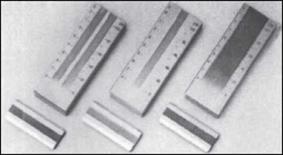The first mills to produce fine particles at a rate of a few tons per hour were slow-speed ball mills and roller mills that were developed about 1880. By 1920, there was a strong demand for fine grinding as industry revived after World War I. By then the ball mill was so successful that for many years better fine grinding meant finding ways to improve conventional ball mills rather than inventing better machines. Finer particles could always be made by grinding for longer periods in ball mills, and although this increased the cost, it did not involve a risk. But even then some new ideas were being tested. Ball or pebble mills were used for either continuous flow grinding or batch grinding.
Batch mills were made with removable openings on the shell of the mill. With the cover removed and the mill shut down and the media in the mill, the material to be ground was put in the mill and the cover was put on the opening. The mill was run until the material was ground to the desired product size. When periodic shutdowns and sampling for size were necessary, the mill was shut down; the ground material and the
|
|
FIGURE 8.1 Two ink samples being leveled in gage paths by use of scrapper plate (Gardco 2004; reprinted by permission of Paul N. Gardner Co. Inc.) media were removed and the media was separated from the ground material. When product purity required it, the mill and the media were washed before putting the next batch to be ground in the mill. Some of the batch pebble mill shells are made of porcelain. Batch grinding is used for paint and other fine iron-free products.
Ball mills, with lengths about twice the diameter, were designed to regrind rougher concentrates, middlings, and tailings when regrinding was needed. Stirred-energy mills, developed during and after World War II, particularly in Japan, proved to be more efficient than long-length ball mills for regrinding and are installed in sulfide ore concentrators for regrind services.

